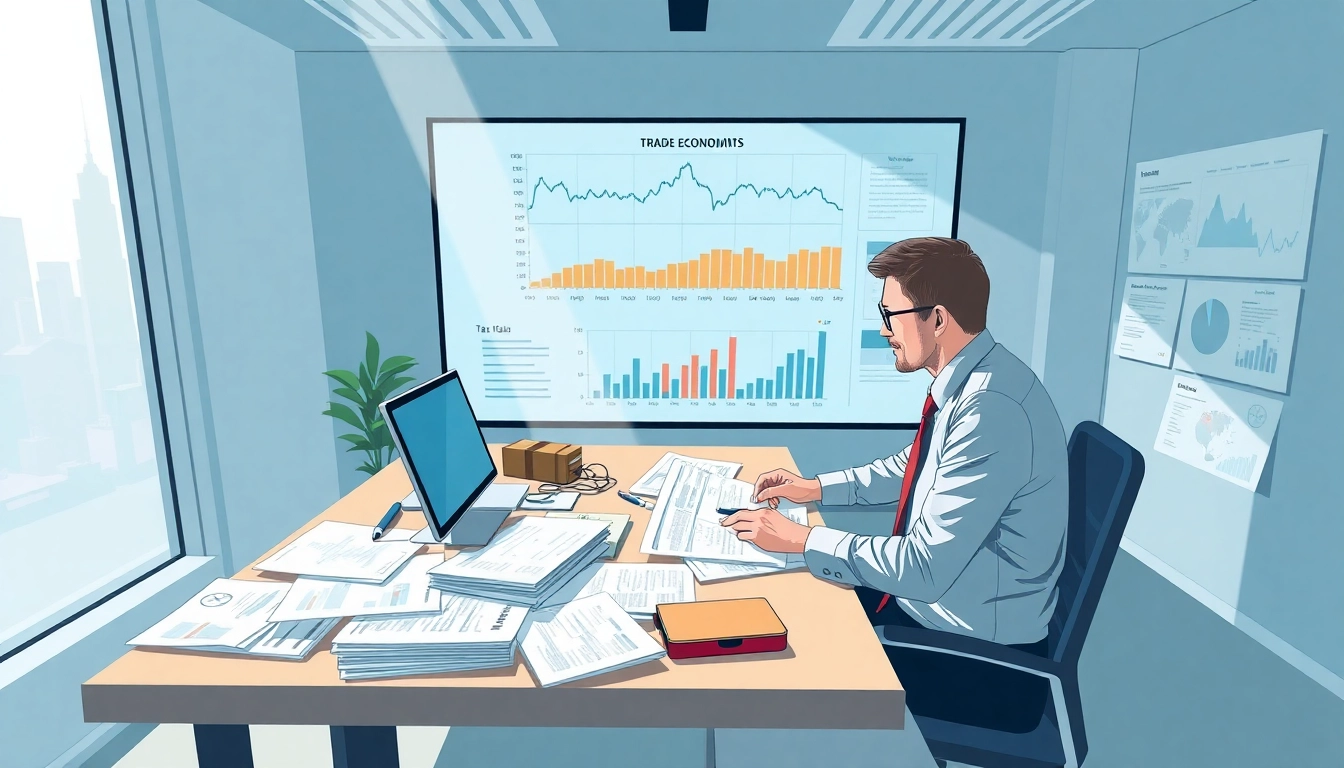Understanding Import Tariffs in China: Impacts and Strategies for Businesses
Introduction to Import Tariffs in China
Import tariffs are taxes imposed by a government on goods and services brought into a country. They play a crucial role in fostering domestic industries, influencing international trade relations, and generating revenue for governments. Understanding the intricacies of import tariffs in China is essential for businesses looking to navigate the complex landscape of global trade and optimize their operations in the region.
Definition and Importance of Import Tariffs
Import tariffs serve multiple purposes. They protect local industries by making foreign goods more expensive, thus encouraging consumers to choose domestic products. Additionally, tariffs can be used as a tool for negotiating trade agreements and as a means to generate revenue for the government. For countries like China, which is a significant player in global trade, import tariffs are a crucial aspect of its trade policy, impacting both domestic businesses and international relations.
Historical Context of Tariffs in China
China’s approach to import tariffs has evolved significantly over the years. Historically, under the influence of foreign colonial powers and in the wake of World War II, China had a contentious relationship with tariffs. However, since opening its economy in the late 20th century, China has adopted various tariff policies to not only protect its industries but also stimulate foreign investment and international trade.
In the early 2000s, with China’s accession to the World Trade Organization (WTO), there was a shift towards lower tariffs and increased market access for foreign enterprises. This change marked a pivotal moment in China’s trade policy, as the country aimed to integrate more fully into the global economy.
Current Trends in Import Tariff Policies
In recent years, China has seen fluctuating tariff rates of late, driven by both domestic economic conditions and international pressures, particularly the U.S.-China trade war. Tariffs on certain imports have been raised, while others have seen reductions as part of trade negotiations. The current trend indicates a more strategic approach to tariffs, focusing on key industries that are deemed essential for national security and technological advancement.
For instance, recent policies have favored technology transfers and have imposed higher tariffs on electronic products, reflecting the importance of tech in China’s future economy. This strategic targeting demonstrates how current tariff policies shape both domestic and international economic strategies.
The Economic Impact of Import Tariffs in China
The economic ramifications of import tariffs are multifaceted, influencing everything from consumer prices to the global balance of trade. A deeper examination reveals significant effects on domestic industries, international relations, and market dynamics.
Effects on Domestic Industries
Import tariffs directly impact domestic industries by providing them with a competitive edge against foreign products. By raising the cost of imported goods, tariffs can lead to increased sales for local manufacturers, potentially resulting in job creation and economic growth. However, this protection comes with potential drawbacks, such as complacency among domestic companies and reliance on government support.
For example, China’s steel industry has benefited from protective tariffs, which have allowed it to flourish in a competitive global market. Conversely, consumers may face higher prices, which can lead to decreased spending on non-essential goods and services, creating a complex cycle of economic impact.
International Trade Relationships
Import tariffs also play a pivotal role in shaping international trade relationships. They can be used as leverage in trade disputes or negotiations. China’s tariff policies have drawn criticism and retaliation from other countries, particularly the United States, leading to a tit-for-tat situation that affects global supply chains and trade dynamics.
Understanding these relationships is vital for businesses engaged in international trade, as fluctuating tariffs can alter the landscape of export and import opportunities. For instance, while tariffs on specific goods may favor certain domestic industries, they can also drive up costs for businesses reliant on imported components, leading to broader economic implications.
Market Reactions and Economic Data
Market reactions to changes in import tariffs can be immediate and profound. Financial markets closely monitor tariff changes, which can affect stock prices, currency values, and investor confidence. Economic data, such as GDP growth rates and trade balance figures, are often influenced by tariff policies as businesses adjust their strategies in response to changing conditions.
Recent data indicating a slowdown in China’s economic growth has led to speculation about whether tariffs will be adjusted further to stabilize the economy. Investors keenly evaluate these indicators to mitigate risk and seize opportunities in the dynamic landscape shaped by tariff policies.
Navigating Import Tariffs: Strategies for Businesses
For businesses looking to navigate the complexities of import tariffs in China, having effective strategies in place is crucial. These strategies should address the implications of tariffs and offer practical steps for adaptation and compliance.
Assessing Import Tariff Implications
Assessment begins with a comprehensive understanding of the specific tariffs applicable to a business’s products or services. Companies must keep updated with the latest policies and any forthcoming changes that might impact pricing and supply chain management.
Utilizing resources such as trade data reports and government publications can provide insights into tariff rates and exemptions that may be available. Furthermore, businesses should conduct cost-benefit analyses to determine how tariffs influence their pricing strategies and market positioning.
Adjusting Business Strategies and Operations
Once tariffs are assessed, businesses must consider alterations to their strategies and operations. This may involve sourcing materials from different countries to mitigate tariff impacts or re-evaluating product pricing to remain competitive.
For instance, a company that typically imports textiles from the U.S. may explore sourcing from Southeast Asia to avoid high tariffs. Additionally, companies should consider building stronger relationships with local suppliers and focusing on diversifying their sourcing strategies to enhance resilience against unpredictable tariffs.
Case Studies of Successful Adaptation
Examining case studies of businesses that have successfully navigated tariff challenges can provide practical insights. For example, a electronics firm facing steep tariffs on imported components redesigned its supply chain to include more local partnerships. By investing in domestic suppliers, they reduced reliance on imported parts and avoided tariff penalties while positioning themselves as compliant with national policies.
Other companies have restructured their operations to make them more adaptable to tariff changes, implementing flexible pricing strategies and innovative manufacturing processes that stand resilient in the face of regulatory shifts.
Compliance and Regulatory Framework
Compliance with import tariff regulations is essential for any business operating in or exporting to China. Understanding the legal obligations can mitigate risks and ensure smoother operations.
Understanding Legal Obligations
Importers must be aware of their legal obligations under Chinese law, which consists of complex regulations that govern the import process. This includes understanding the classification of goods, proper documentation requirements, and applicable tariffs. Businesses should invest in training and resources to ensure that their teams are well-equipped to handle compliance issues.
Best Practices for Compliance
Implementing best practices for compliance involves several key strategies. Businesses should maintain meticulous records of their import transactions, ensuring all documentation is accurate and readily available for inspection by authorities. Regular audits of compliance practices can help identify any potential gaps or areas that require improvement.
Moreover, establishing open communication channels with customs authorities can facilitate smoother clearances and reduce the risk of delays caused by non-compliance. Hiring experienced customs brokers can also simplify the process and serve as a valuable resource for navigating complex regulations.
Common Challenges and Solutions
Numerous challenges can arise in the quest for compliance, including changes in regulations, misclassification of goods, and the complexities associated with tariff refunds. Developing a proactive approach to addressing these challenges can help organizations avoid penalties and enhance operational efficiency.
For example, businesses can create a dedicated compliance team to stay abreast of regulatory changes and ensure proper classification of goods. Utilizing software solutions for customs declarations can automate parts of the compliance process, reducing the risk of human error and expediting workflows.
The Future of Import Tariffs in China
Looking forward, the landscape of import tariffs in China is likely to continue evolving. Businesses must remain vigilant and adaptable to anticipate and respond to changes in policy and economic conditions.
Predicting Changes in Policy
Predicting future changes in import tariff policy involves analyzing current geopolitical events, domestic economic performance, and trade negotiations. Businesses should establish frameworks to monitor these factors and assess potential impacts on their operations.
For instance, ongoing international negotiations, such as those occurring in the Asia-Pacific region, could reshape tariff structures and create new trade pacts that may benefit companies operating across borders.
Preparing for Economic Shifts
As the Chinese economy faces fluctuations, businesses must strategize how to prepare for potential economic shifts. This includes diversifying supply chains to mitigate risks associated with tariff changes and staying informed about economic indicators that could signal upcoming tariff adjustments or trade policy changes.
Adaptability is key in a rapidly evolving trade environment. Developing agile business models that can respond promptly to changes will better position companies for success amidst uncertainty.
Long-term Strategic Planning for Businesses
Long-term planning is critical in navigating the complexities of import tariffs in China. Companies must adopt a holistic view of their market strategy that encompasses tariff implications, compliance requirements, and anticipated policy changes. By creating robust contingency plans, businesses can better withstand tariffs and position themselves as leaders in their respective sectors.
Integrating scenarios into strategic planning—such as potential tariff increases or trade disputes—can help businesses envisioned the future and develop comprehensive risk management strategies to safeguard operations.



